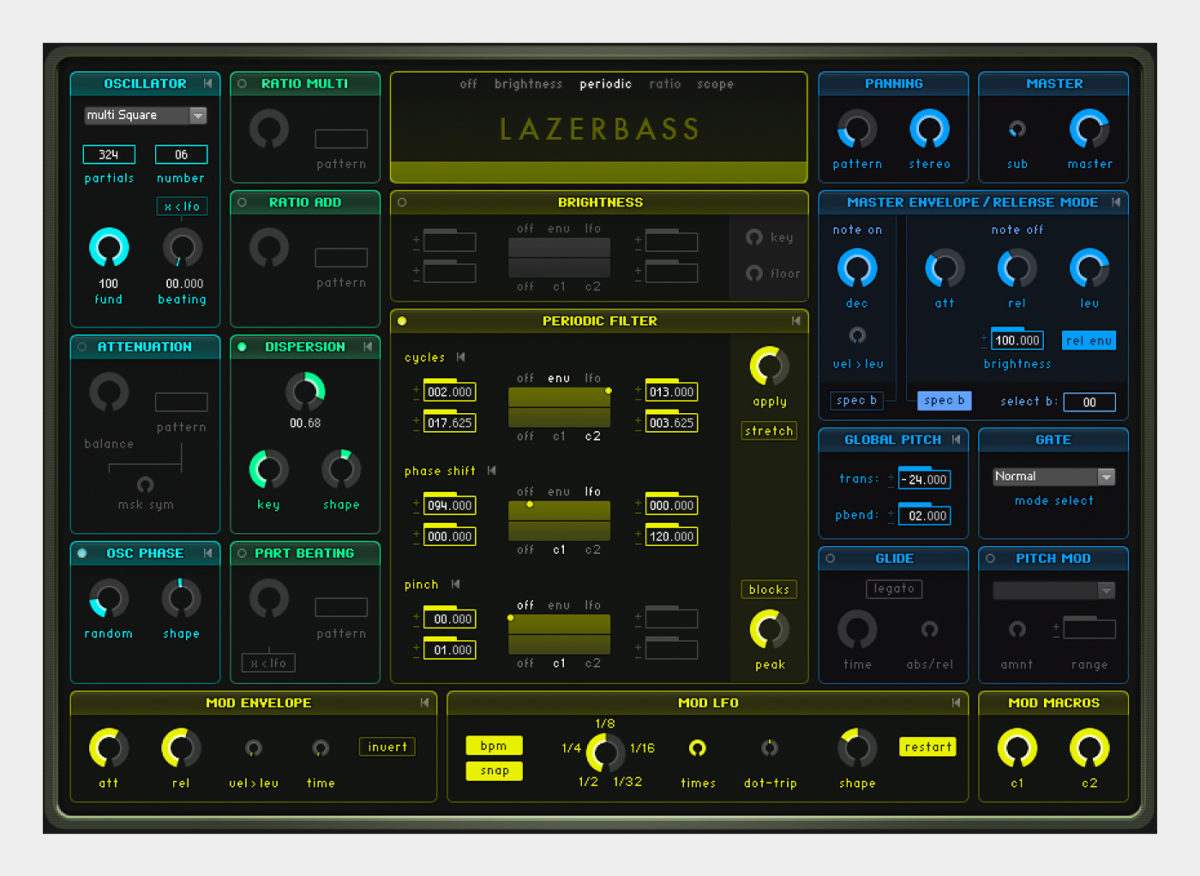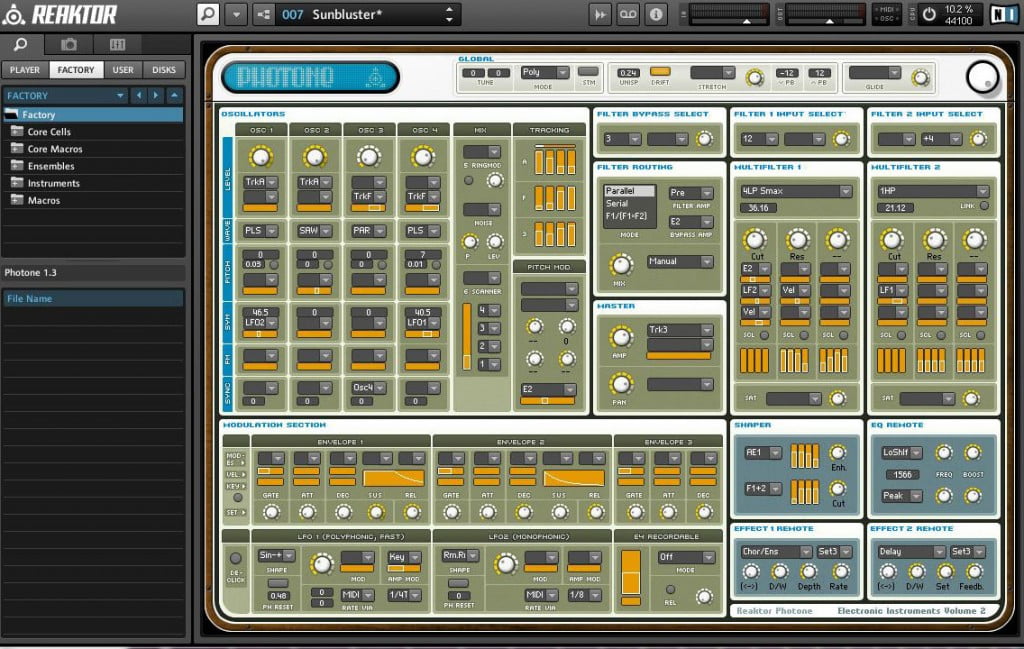

More frequencies are allowed to pass back into the input, feeding the original signal and enhancing resonances (which are tuned to specific notes set in the Delay Tune section). Increasing the Reverb time will result in less damping to feedback’s signal before it comes back to the input. Next to it, we can find the Feedback section. Here the shaped noise will become tonal when passing through a tuned delay, which controls the pitch. The magic happens in the section below the first row of controls, the Pipe section. Here we can filter the noise, set the envelope time and also apply it to the filter’s cutoff to express a bit of movement, which is especially useful for plucked sounds. In part A the sound is generated by Noise or DC in the upper section called Steam. NI’s Prism is an example of (Reaktor-based) Modal synthesizer, and other examples are Ableton’s Tension and Collision.įor further readings, we recommend NI Prism manual: First, physical modelling synthesis is not a single technique, there are a lot of them, like Modal Synthesis (and the Triple Axis Modal Synthesis by Giorgio Sancristoforo), Articulatory Synthesis, Digital Waveguide Synthesis, the Karplus-Strong Algorithm, and many more techniques. The resulting sounds can be close emulations of existing acoustic instruments as well as completely new territories of unexplored tonal wonders. Phsyical modelling synthesis is a complex and vast topic which is far beyond the scope of this article, but, without diving into details, we can say that the generation of the sound is due to mathematical models and algorithms. SteamPipe 2 is a physical-modelling synthesizer that emulates and shapes air blown through a Pipe, and it is capable of creating, obviously, Pipe emulations, “flutey” leads and atmospheres, glassy plucked strings and much more. In this article, we will focus on SteamPipe 2, a synthesizer, and on Space Masters 2, a reverb. If you’re curious to hear some of them in action, you can listen to the audio demos of Reaktor at this link:


Also, don’t forget that each ensemble may have its own snapshots.įrom ethereal drones and endless soundscapes, to granular FX, to powerful synths, the Factory Library is capable of covering an incredible range of sonic fields.
#Reaktor factory library free
Furthermore, as we will see, we are free to connect ensembles in edit mode, and to create custom systems by feeding an effect to another, a synthesizer into an effect, etc. This is also true for some effects from Blocks. It is important to note that Reaktor, when used in a DAW, can be either and Instrument or an FX (hence the Reaktor FX plugin), so with the ensembles in the Effects section we can process external audio material. The categories are:Įach category is a unique sonic world composed by weird and unusual instruments alongside more classic and familiar ones. The Reaktor Factory Library’s folder, on the left of the interface, shows a collection of categories in which the ensembles are organized.
#Reaktor factory library code
Just to remember how complex and comprehensive the Reaktor world can be, to the above mentioned number of the ensembles we can add a vast library of instruments programmed by the community ( ), Blocks, the Instrument modules (.ism) that we can freely arrange and connect to create our rack, the possibility to code our own instrument, and, lastly, third party complete instruments.Īfter having a look to Blocks and to a third party instrument, S-Layer, in previous installments, let’s now explore what the Factory Library has to offer. The core library of Reaktor has a lot to offer, probably months of sonic experimentations with more than 70 pre-built ensembles. In this fourth installment of Kritikal Reaktions we will explore two ensembles from the Factory Library, SteamPipe 2 and the reverb Space Masters 2.
#Reaktor factory library full
Reaktor’s extensive Factory Library is a treasure chest full of great instruments, some of them really unusual and exoteric. Reaktor’s power doesn’t come from Blocks or third party instruments, but from the possibility to create your own individual ensembles from scratch, programming or assembling them in unique, new systems. In this installment we will explore two ensembles from them.

Reaktor’s Factory Library is a treasure chest full of great instruments and FX, some of them really unique and exotic.


 0 kommentar(er)
0 kommentar(er)
